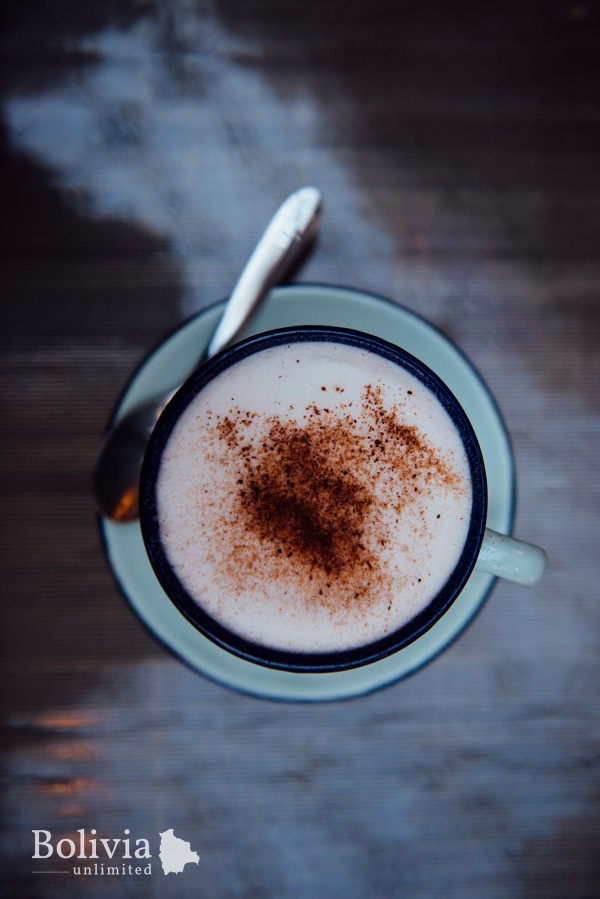Café Espacio Cultural Sangre y Madera

23 Feb, 2018 | Georgina Bolam
Photos: Iván Rodriguez Petkovic
Brewing coffee and culture in Sopocachi’s corner
Sopocachi: an extraordinary enchanted, bustling neighbourhood, with avenues and pathways that weave between the main roads; flooded with ornamental trees, sociable parks where you can have a breath of fresh air within the intimacy of the shaded spaces. In this truly inimitable neighbourhood, and off the Medinacelli passageway, you will find the Café Espacio Cultural Sangre y Madera, a café that triples as a laboratory and cultural space. Víctor Hugo Belmonte, the civil engineer and barista, has made Sangre y Madera his own scientific laboratory. In this café, which has only been open for three months, Hugo puts into practice what he learnt in an international course in Barcelona from Kim Ossenblok, a well-known Belgian barista and coffee taster.
With his wife Kruzcaya Calancha, who graduated in gastronomy, the couple decided to turn their residence into a cultural space. Calancha, also an ex-dance teacher, wanted to maintain the venue as not only a place to eat, drink and relax but also as a cultural environment where workshops of all sorts can take place, such as salsa dancing and children’s theatre workshops. When speaking with the couple, a workshop for women in business was taking place in the main patio area. The environment was inviting and I acquired a sense of a real community that is starting to take shape there. The waiters happily talk to you about the workshops available around the time you are visiting and consistently take pride in the food and drinks they present to you. After my first visit, I have returned a couple of times to simply soak in the atmosphere and try the variety of coffees and appetisers they have on offer.
As mentioned in the menu, it is a house built in the 1920s, once owned by past diplomat and minister, Hugo Ernst. The republican-style house opens with folding doors that lead to the patio of the café. Its windows that almost reach the floor and its cherry-coloured walls come together to create a wholesome experience for the visitor.
Open from noon to 10pm on weekdays and noon to 6pm on Saturdays, anyone can visit to take in the amicable and sociable atmosphere whilst they enjoy some of their favourite items from La Paz cuisine. ‘We have a lot of food and drink that is typical of La Paz – things you would find in the food markets but adjusted for our guests. For this time of year during the Alasitas festival we even have piqueos (appetisers), which we call “Alasita paceña”, named after the festival where locals purchase miniature items to give to Ekeko, the Aymara god of abundance, in hope he will bring fortune and happiness to their lives. You can get a sandwich de chola or salteñas miniature style to share or to have on your own. I was introduced to the sandwich de palta (avocado), which was rich with flavours and tingled my taste buds, particularly with its caramelised tomatoes, soft, fresh bread and basil flavouring.
Although the food is important in this new café, the engineer sees himself, above all, as a lover of coffee. When tasting their coffee I was particularly amazed by the cold brew. Delivered to me in a rotund glass with a circular block of ice in the centre, its delicate sweetness, presentation and delightful coffee flavour was remarkable. This particular coffee is infused for more than 24 hours at 4°C, which allows Hugo to extract the coffee in the most delicate way possible. Others included coffees flavoured with liquors, hot coffees, espressos with milk and their own Sangre y Madera sucumbé with a touch of syrup and toasted marshmallows.

‘Because our coffee grows in Los Yungas [at 400 to 3,500 metres above sea level],’ Hugo explains, ‘it takes longer to mature than other coffees. This simply means it absorbs more sweetness and oils, which makes it one of the best beans available… Preparing a specialty coffee is another world. It is something that cannot be obtained in the supermarket, because there are many variables, such as the handling of the beans, drying and preservation.’ With these elements, Hugo has everything necessary to get the flavour he desires; from an apparatus that measures the consistency of the grain, to a computer application that gives the exact measurement of water and quantity of the specialty beans.
With the introduction of distinctive places such as this, the Sopocachi neighbourhood is creating a new image for itself; an image of experimental businesses, risk-taking processes and diverse cultural spaces for Bolivian and foreign palates.







